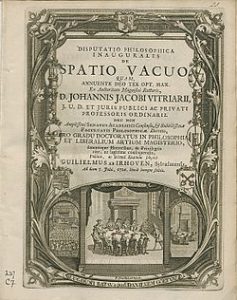
Although different journals have different guidelines for submission, science papers need to written in a simple and lucid manner. Some of the most important tips for writing a scientific manuscript are as follows: the paper must be written in a manner that is clear and concise. Consistency should be maintained in terms of quality of content. Authors need to do away with redundant content. Vague statements must be avoided at all costs. In case of abbreviations, they should be spelt out at the first instance. Unless stated otherwise, numerals from zero to nine must be spelt out. Numerals from 10 onwards must be written for all numbers.
If the paper has to be translated into English, then special attention needs to be paid for scientific terminology. In English, a decimal point separates numbers and not a comma. Construct relatively simple sentences such that the verb is close to the subject. Although the use of personal pronouns is encouraged, it should not be done indiscriminately. For example, “In our study, we performed….” Avoid using personal pronouns in Methods section or Figure legends. It is preferable to write in active voice and not passive voice. A semi-colon must be used to separate items if the lists are long and complicated. The Abstract, Methods, and Results must be written in past tense. On the other hand, Introduction and Discussion sections are primarily written in present tense. Please note that British and American English is vastly different in terms of spellings, so maintain language consistency as per journal requirements.
General manuscript layout:
An experimental study is generally segregated into four sections: Introduction, Methods, Results, and Discussion. A manuscript must include consecutive page numbers, right from the title page. The title page is the first page of the manuscript and it should contain the following information: article title, authors(s), and sources of support. Article title should be concise and clear to many scientific readers. It must clearly indicate the purpose of the study, including keywords. This would help in electronically retrieving the article. Include the names and institutional affiliation of author(s) in the paper. Mailing address, telephone numbers, and email address must also be included in case of Author(s). Grants and equipment used in the study must be presented as Sources of support.
Abstract
This follows the title page. A clear and precise abstract must be not more than 250 to 300 words. An abstract generally consists of the study’s objective, background, procedures, findings, and conclusion. Only new findings must be presented in this section. Abbreviations must be spelt out in this section.
Introduction
This section is included in the main body of the manuscript. In most journals, this section is presented after the Abstract page. The introduction section must develop the context and background of the experimental study. For this purpose, findings of previous studies related to the objective of the current study must be presented. Statistical data and results of previous studies must not be presented in this section. The objective or aim of the current study must be presented at the end of the Introduction section. Most sentences in this section must be written in present tense.
Materials and Methods
In most journals, this section follows the Introduction section. In this section, authors must describe “why they conducted the experiment” and “how they conducted the experiment”. All reagents, equipment, and chemicals used in the experiment must be mentioned along manufacturer’s information. The information should be presented in past tense and passive. Authors should not write sentences “In our study, we perform…………”
The information presented in this section must be such that a knowledgeable expert can perform the experiment simply by reading this section. New methods must be explained in detail whereas well-known methods must be referenced. Unless stated otherwise in the journal, abbreviations should be spelt out at the first instance; however, there may be some standard abbreviations that do not need to be spelt out. These standard abbreviations are stated in the journal.
Results
This section must be written in past tense, and it should present the most important findings. Authors should describe prominent observations of the experiment in this section. Supplementary information can be presented in the appendix. Authors should present numerical results in terms of absolute numbers and their derivatives, i.e. percentages. In this section, statistical terms such as “normal” “significant difference” and “random” must not be used for non-technical purposes. These terms should be strictly used to present “Statistical Analyses” in the Results section.
Discussion
This section must be presented after Results section. Novel findings of the current study must be presented in correlation with related studies. The sentence structure must be preferably in the present tense. Conclusions of the current study must be presented in the final paragraph of Discussion section. Data presented in previous sections should not be presented in this section. Limitations of this study must be presented in Conclusion section. Implications must be presented in Discussion section. Authors should not include statements that cannot be backed up with conclusive evidences.



